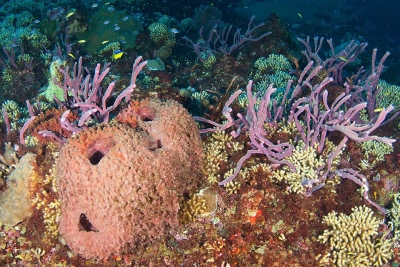
A sponge is one of the simplest forms of animal life. It feeds by drawing in water through its pores and extracting food. We use the dead skeleton of a sponge to wash with in the bath!
The living sponge is a mass of cells and fibres, its interior permeated by an intricate system of canals that open as holes of various sizes through the tough dark brown or black skin, which may be hairy from fibre ends that pierce it. Only after it has been completely cleaned of its millions of living cells does a sponge resemble the sponge of commerce; i.e., a soft and elastic spongin skeletal framework. Commercially valuable sponges, which may be found from tidal level to a depth of about 200 feet, usually are harvested by hooking or harpooning in shallow waters, by skin diving or by deepwater fishing. Although the most valuable sponges are found in the eastern Mediterranean area, they also are harvested off the west coast of Florida and the Florida Keys, in the West Indies, off Mexico and Belize, and, to a limited extent, off the Philippines. Because they have the ability to regenerate lost parts, sponges can be cultivated from small fragments.
Sponges are valuable from a scientific point of view because of their unusual cellular organization (the cells do not form tissues or organs such as those found in other animals), their ability to regenerate lost parts, and their biochemical features (they have many compounds not known in other animals). Sponges comprise an important part of the life found in the depths of the sea (benthos) and may be associated with other organisms; e.g., many types of animals live in sponges.
Credit : Britannica
Picture Credit : Google




